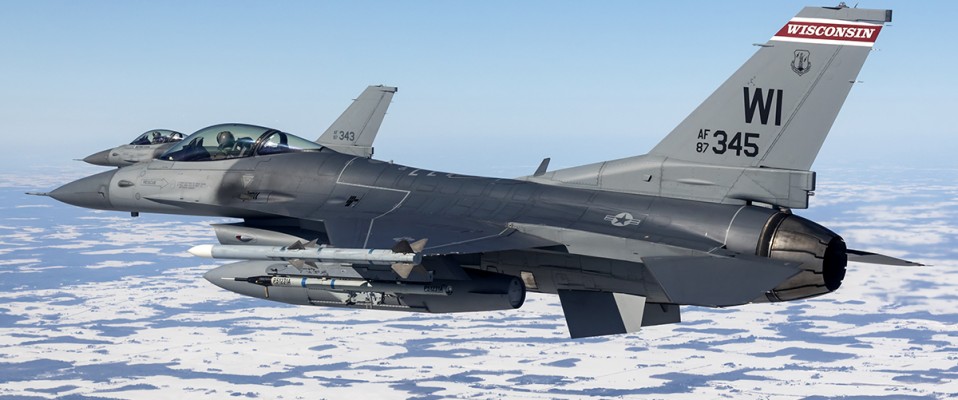The 115th Fighter Wing of the Wisconsin Air National Guard
Report and photos by Ivan Voukadinov
May 24, 2019
Although the 115th Fighter Wing celebrates its official beginning on October 6, 1948, its history goes even a little further back. The 115th Fighter Wing (FW) traces its lineage from the 128th Fighter Wing (FW) and then even further back to the 176th Fighter Squadron (FS), whose roots were in the 306th Fighter Squadron (FS). The history of the 115th FW therefore truly begins on July 16, 1942, when the 306th FS was constituted and then later activated on July 22, 1942. Soon after, the 306th FS was inactivated on May 1, 1944. However, more than two years later, on May 24, 1946, the 306th FS was reconstituted and redesignated the 176th FS, and allotted to the Air National Guard (ANG), which would be officially established as a reserve component of the United States Air Force as part of the National Security Act of 1947-the same act that implemented the modern day Air Force. On October 6, 1948, the 176th FS received federal recognition. At this time, the unit was comprised of 13 officers and 20 enlisted men and was flying F-51 Mustang aircraft. By the close of 1949, tensions were mounting on the Korean Peninsula, and in less than a year the U.S. would find itself embroiled in another conflict, a mere five years after the end of WWII. The Korean War represented the first significant test of the training, experience, and vigilance of the members of the newly established 176th FS. In early 1951, the 176th FS became the first ANG unit to fly the modern jet fighter, the F-89 Scorpion, having converted during its active duty tour. However, the conversion to the F-89 only lasted seven months before the unit returned to the F-51. By October 1953, the 176th FS began getting F-86As and converted to 176th Fighter Interceptor Squadron (FIS). A year later, in October of 1954, the 176th FIS converted back to the F-89 Scorpion. The Scorpions slowly replaced a mix of F-51Hs and F-86As, and the last Mustang departed when the final F-89 arrived. Over the course of the next 12 years, the unit added each model of the F-89.

On April 15, 1956, the structure of guard units changed to the concept of a self-sufficient group that had all the functions necessary to operate a base. The 115th Fighter Interceptor Group (FIG) was formed with all the 115th FW squadrons, flights, and assets seen today. The 176th FIS was the flying portion of this organization. In 1956, the 115th FIG along with the 128th Fighter Interceptor Group in Milwaukee, became the embodiment of the 128th Air Defense Wing (ADW), with its headquarters in Milwaukee, Wisconsin. This 62-year-old reference point serves as the foundation for the future 115th Fighter Wing, Truax Field, Madison, WI. In early 1960, the 176th FIS began manning for the air defense alert mission and in 1966 converted to the supersonic F-102 Delta Dagger.
In 1974, the 176th FIS went from a fighter squadron to a support squadron, converting to the O-2A Skymaster observation aircraft and the Forward Air Control (FAC) mission and re-designating to the 176th Tactical Air Support Squadron (TASS), under the Tactical Air Command. The role of the O-2A was to act as a forward air controller, identifying and marking enemy targets with smoke rockets, coordinating air strikes, and reporting target damage. The aircraft also played a role in psychological warfare operations, blasting recorded messages and dispensing propaganda. On July 1, 1978, the Tactical Air Command executed a reorganization plan for inactivating all group headquarters co-located with wing headquarters. This step resulted in the inactivation of the 115th Tactical Air Support Group, replaced by the 128th Tactical Air Support Wing. It was at this point when the 115th designation disappeared from the unit’s history for the next 17 years. By 1979, the unit transitioned aircraft yet again, becoming one of the first to be Jet Forward Air Control with the arrival of the OA-37 Dragonfly. The mission of this aircraft was primarily close air support (CAS), night interdiction, and forward air control (FAC). The OA-37 would phase out of the 176th TASS inventory two years later, and the unit would transition to another legendary airframe – the A-10 Thunderbolt II and the unit re-designated the 128th Tactical fighter Wing (TFW). The 1980s saw multiple deployments with the A-10 to Europe and Panama. On January 12, 1992, the 128th TFW officially received a new support aircraft, the Fairchild RC-26B “Metroliner”.

On March 16, 1992, the 128th TFW faced another monumental change when the unit was redesignated the 128th Fighter Wing (FW) under the newly formed Air Combat Command and began transitioning to the F-16 Fighting Falcons. The characteristics of the new mission include aerospace control and force application. Typical missions included counter air, strategic attack, interdiction, and close air support. September 12th marked the last flight for the A-10 by pilots of the 128th FW. By October of the following year, the unit would become part of the Eighth Air Force. Three years later on October 1, 1995, the 128 FW was re-designated the 115th Fighter Wing (FW) with no change in mission or aircraft. This re-designation returned the 115th FW to its original command structure with all its supporting 115th FW designated squadrons and flights that were first established on April 15, 1956.
Today, in 2019, the 115th FW has been flying the F-16 for more than 27 years. In that time, the unit has deployed around the globe all the while maintaining their mission which is “to deliver dominant combat air power and provide agile support for domestic operations.” In the past 15 years, the 115th FW has been on 5 combat deployments in support of Operation Iraqi Freedom and Operation Enduring Freedom and in 2019, the unit will deploy again to an undisclosed location. Other recent non-combat deployments have included one to Kunsan, Korea in 2017 and Kadena, Japan in 2015. Although not deploying as often as active duty units, the 115th tends to do a long term deployment once every 2 years.
When at home in Truax Field, training for future missions is the daily routine. Truax Field was activated as an Army base in June of 1942 and was deactivated as an active military base in 1968, when it was taken over by the Wisconsin Air National Guard. It was named in honor of Lieutenant Thomas L. Truax, a Wisconsin native, who was killed in a P-40 Warhawk training accident in November 1941. The location offers great training opportunities because of its very close proximity to the large training airspaces located in central Wisconsin. The available airspace is more than 30,000 cubic miles, up to 50,000 feet high. It takes literally a few minutes for the aircraft to fly to these airspaces, which maximizes training efficiency. Not far away is also the Hardwood Range, which provides realistic and challenging training scenarios and offers a full spectrum of target sets that support live, laser, GPS-guided munitions, moving strafe, and Synthetic Aperture Radar (SAR) targets. Although in wintertime the weather causes some difficulties, the lack of many other military airbases in the area means the training airspace is less crowded and therefore allows easy and seamless mission planning, again increasing efficiency. Tankers from the nearby 128th Air Refueling Wing and 126th Air Refueling Wing are usually readily available for support.

Most F-16 units in the Air Force and National Guard tend to focus on one area or another, even though the aircraft itself is capable of a diverse set of missions. For the 115th FW, Close Air Support (CAS) is the name of the game most often, especially given the demand for such missions in the past 15 years during combat operations overseas. As such, the pilots in the 115th FW go through a repeating 8-month syllabus which allows them to train for all the necessary missions required. While the focus is on CAS, they also train for air interdiction, opposed interdiction, basic fighter maneuvers (BFM) and beyond visual range (BVR) air combat with both small 1v1 and large force 4vX engagements. This allows them to have a well-rounded skill set and not be a “one trick pony”, all the while taking advantage of the different capabilities of the F-16. The unit regularly takes part in exercises such as Red Flag and Red Flag Alaska where they have a chance to prove themselves and integrate with other air assets, as well as other smaller exercises and deployments such as NAS Key West for training with the Navy’s F-5C aggressor squadron and Tyndall AFB for live air-to-air missile shooting. One of the best training opportunities provided at home is the Northern Lightning exercise which takes place twice a year at the Volk Combat Readiness Training Center (CRTC) just down the road from Truax Field. Due to the close proximity, the 115th FW have become the de facto “hosts” of the exercise, which has recently grown into a large scale event with up to 80 aircraft participating and a focus on integration with 5th generation aircraft.
The terrorist attacks of September 11, 2001, had a profound impact on the defensive and offensive posturing of the U.S. It set the tone for military deployments and commitments from the time of the attacks through today. In the days and weeks following the terrorist attacks, and with the inception of Operation NOBLE EAGLE, F-16s from the 115th FW have been on the tarmac, always on the alert, round-the-clock, 365 days a year as part of the Aerospace Control Alert (ACA) mission. Scrambles don’t happen very often, however it is an important mission which the 115th FW shares with other units around the country. Not all Air National Guard F-16 units are on alert, which puts an extra national security responsibility for the 115th FW. For example, the neighboring 148th Fighter Wing, in Duluth Minnesota does not have alert aircraft, and has a focus on SEAD (Suppresion of Enemy Air Defense), which is a mission set the 115th FW does not train for.
About 1500 people serve in the 115th FW, of which about 500 are full time and the rest are part time, known as “traditional Guardsmen”. The rest of the personnel come in several times a month as needed. Once a month, there is a “drill weekend”, where the full strength of the wing shows up to work and conduct training flights. Usually this is the time when the base is the busiest. This time of scalable force is key to lowering costs compared to active duty Air Force units. In general, once a National Guard unit is deployed somewhere or “activated”, it is absorbed by the associated Air Force command responsible for the area of operations where the unit deploys. Around 35 pilots are currently flying with the 115th FW of which 3-4 are actually active duty and fly with the 115th under the Total Force Integration (TFI) program, which allows active duty pilots to integrate with National Guard units. A hiring board is held every year to recruit new pilots, which can come from all backgrounds including active duty USAF, Navy, Marines, or even pilots who start directly in the ANG. Typically pilots fly about 150-180 hours a year, with a minimum of 6 flights a month required to maintain proficiency. Besides the main flying mission, a key mission for all National Guard service members is also to provide support and relief operations in times of emergency and disaster. The current commander of the 115th FW is Col. Erik Peterson.

The beginning of the end of the F-16 era with the 115th FW is already underway. The 115th FW was one of the first ANG units chosen to transition to the F-35A Lightning II in December 2017. Although an official environmental impact review is still underway, it is expected that the first F-35s will arrive in Truax Field in 2023. The 115th FW currently operates around 20-22 Block 30 legacy F-16Cs equipped with APG-68 radars and a single F-16D which will eventually be replaced by the 5th generation fighters and passed on to other units. Most of the jets are around 30 years old. One of the unique and unusual aircraft assigned to a fighter jet unit which is the 115th FW, is a single RC-26B “Metroliner”. Initially operated as a support aircraft, since 1996 the RC-26B shifted missions and began to support counterdrug operations a main function that continues through to today. The RC-26B acts as a bridge between the Department of Defense and law enforcement agencies by providing accurate and safe intelligence and surveillance and reconnaissance (ISR). Through its use of surveillance and photographic equipment, including a FLIR (forward looking infrared), the RC-26B can provide law enforcement agencies full motion video, ground-to-air communication capabilities, and the ability to execute day and night reconnaissance. The aircraft also supplies “eyes in the sky” during natural disasters, aiding relief efforts by providing real-time assessments of flooded areas, including dams, bridges, and highways.
Author’s Impressions
What is it like to fly the legendary F-16? The author got a small glimpse of this, having the chance to strap into the backseat of the “Viper” over Wisconsin and experience it firsthand.
The mission for the day was to include some routine flying, followed by a photoshoot with a couple of other F-16s. Preparation was key to a successful and safe flight, which began with some cockpit familiarization and operation of the radio and oxygen system. A detailed training followed, which included getting into and out of the aircraft, emergency ground egress, ejection, basic parachute operation and other emergency procedures. The flight suit, G-suit, helmet, and oxygen mask all had to be custom fitted for my upcoming flight as well. After nearly 5 hours, we were ready to go.
My pilot today was Lt. Col. Charles Merkel, a senior F-16 pilot with the 115th FW with more than 3500 flight hours, of which 1200 in the F-16. Before every flight, a briefing is always conducted to go over the planned flight objectives, as well as any contingency procedures. This was no exception, as we met with the two other F-16 pilots with whom we were planned to join up once in the air. Their mission set first included dropping BDU-33 practice bombs over the range, after which they would join up with our aircraft and perform various pre-discussed photo setups. Our aircraft in the meantime would conduct some basic air maneuvers and flying in the airspace north of Truax Field. After joining up with us, all three jets would refuel from a KC-135 before continuing the flight.
Once I had put on all my flight gear, going in the F-16 was actually a relatively easy procedure, which included buckling into the seat and parachute, hooking up the microphone, and connecting the G-suit and oxygen mask to the oxygen system onboard. The preflight checks were done quickly and before I realized it, the canopy was coming down and the engine was spooling up. Having heard fighter jets starting up countless times before from outside, I was surprised by how quiet it was inside. It was a harmony of soft humming and whistling. As the instruments in front of me came to life, I was reading them and trying to make sense of it all. The cockpit of the F-16, while small, actually is quite ergonomic and the seat itself also more comfortable than it looks.

We taxied to the end of runway (EOR) area, where some final checks were done to our jet by ground crew, after which we proceeded to take off with callsign ANIMAL11. As the afterburner of the GE F110 engine kicked on, I was immediately slammed to the back of my seat. It is obvious that the runway was way longer than required, as within seconds we were already pulling the nose up. After a short climb to an altitude of 10,000 feet, we had some time to fly. Lt. Col. Merkel gradually showed me what the F-16 can do and explained how the various controls work. We performed everything from barrel rolls to 360 degree turns and with every maneuver, my G-suit was inflating to prevent me from blacking out. The sensation of “being heavy” from all the loads eventually left me a little exhausted and dizzy. Switching my oxygen mask to “100% oxygen” worked surprisingly well to alleviate the dizziness. Lt. Col. Merkel then gave me the opportunity to try flying it myself. It was incredibly easy and intuitive. The sidestick of the F-16 initially felt very sensitive, however I quickly discovered that it only required fine hand motions. The jet responded without hesitation, and even a relatively small side deflection of the wrist sent the jet rolling. An effortless experience really. Within minutes I was able to replicate the maneuvers I was shown earlier quite well.
After some more maneuvering, we headed towards our rendezvous point with the KC-135. Today, the tanker had come from the 126th ARW at Scott AFB in Illinois. Having flown onboard KC-135s before, it was quite interesting to now experience the refueling operation from the “other side”. The refueling boom moved over the cockpit so close I thought I could literally reach up and touch it. Even the contact was barely felt, and soon I noticed the fuel gauge going up as we took on some Jet-A1. We disconnected, and by this time the other F-16s had reached us, flying with callsigns BADGER11 and BADGER12. They took turns refueling, joined up, and we left the tanker behind us. The photoshoot that followed included some more maneuvering and formation flying. A lot of factors had to be considered for each photo including the position of the sun, the position of the jets, timing of breaks and maneuvers, communication between the three of us, cockpit reflections, and much more. Everything was executed professionally and according the briefing. As the photoshoot finished up, we headed back to Madison and not even 10 minutes later we were breaking to land. With the adrenaline still high, I looked at the time and realized almost 2 hours had gone by. Just another day at the “office” for the men and women flying in the 115th FW, but certainly a unique experience for almost anyone else.



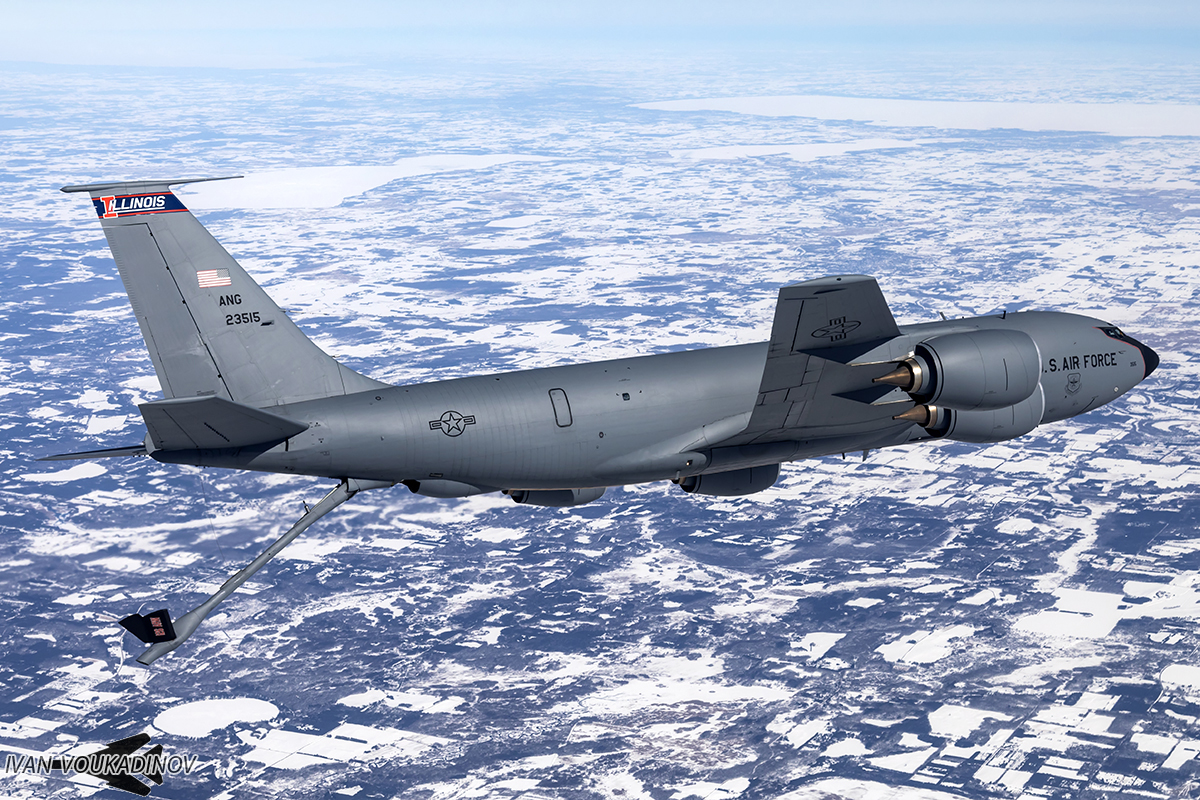
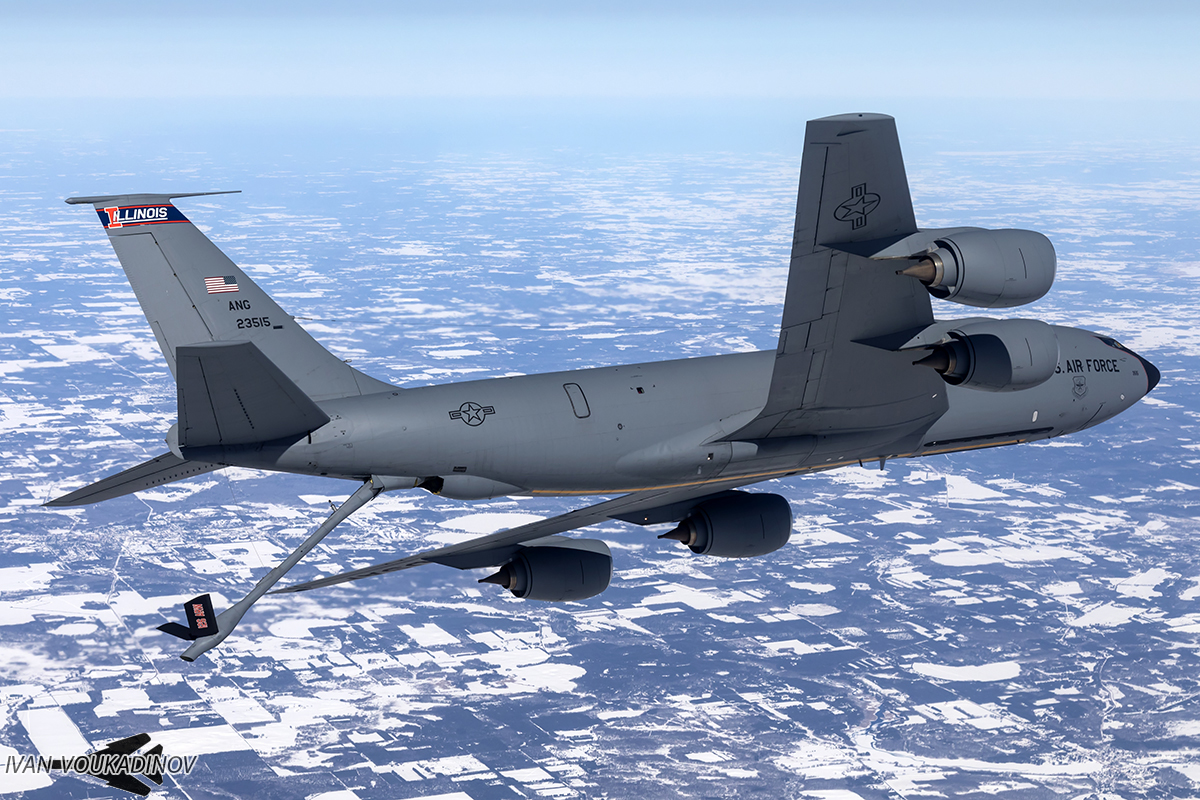


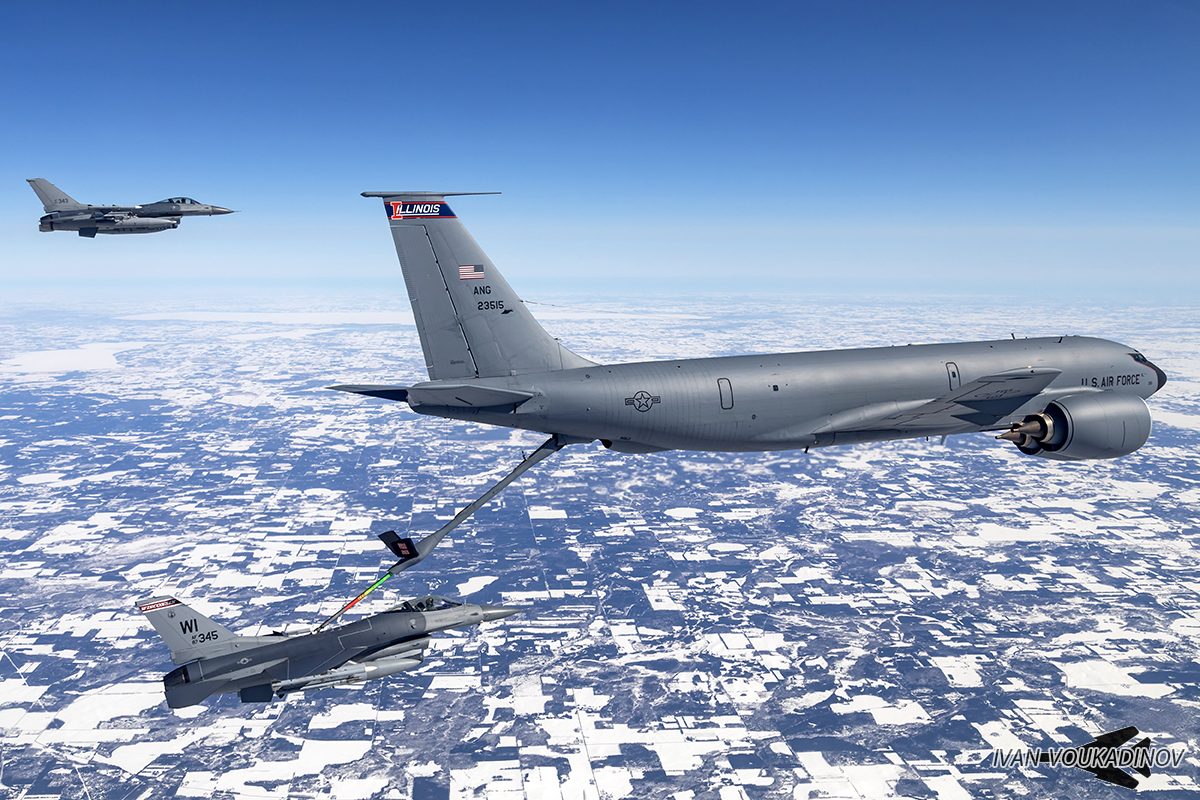
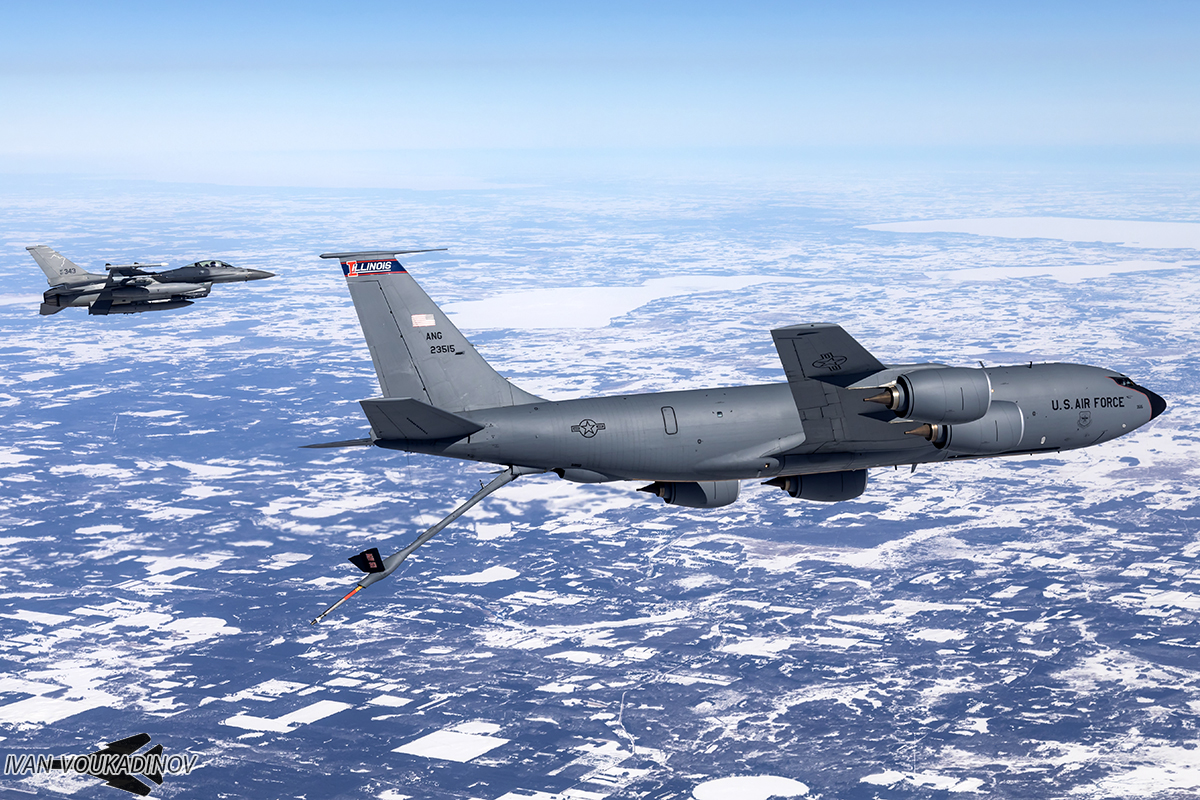
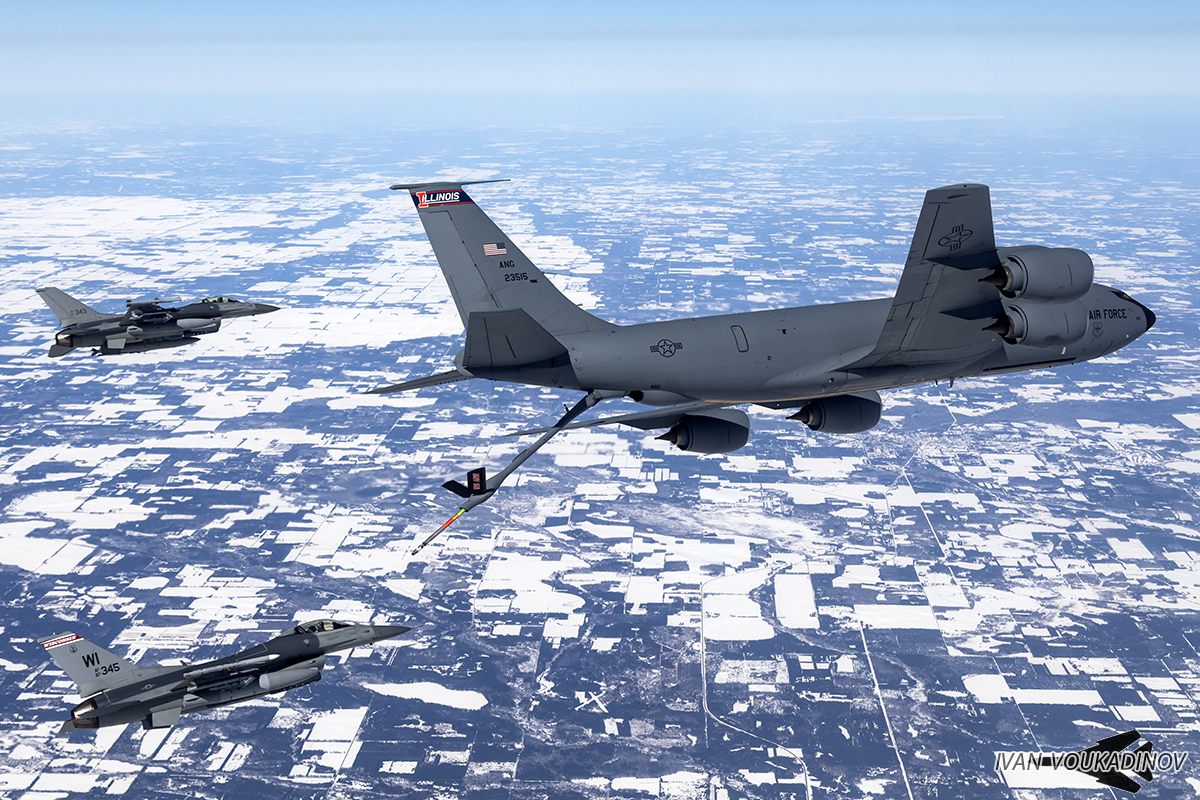

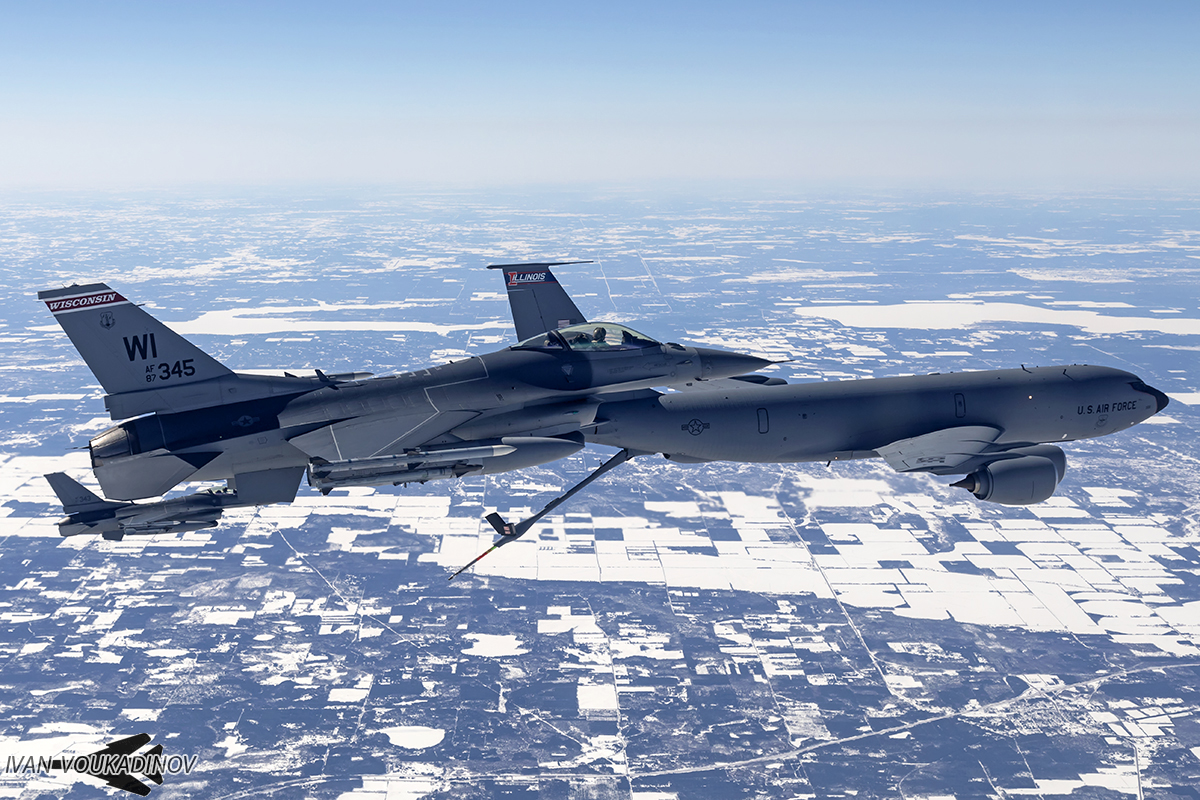



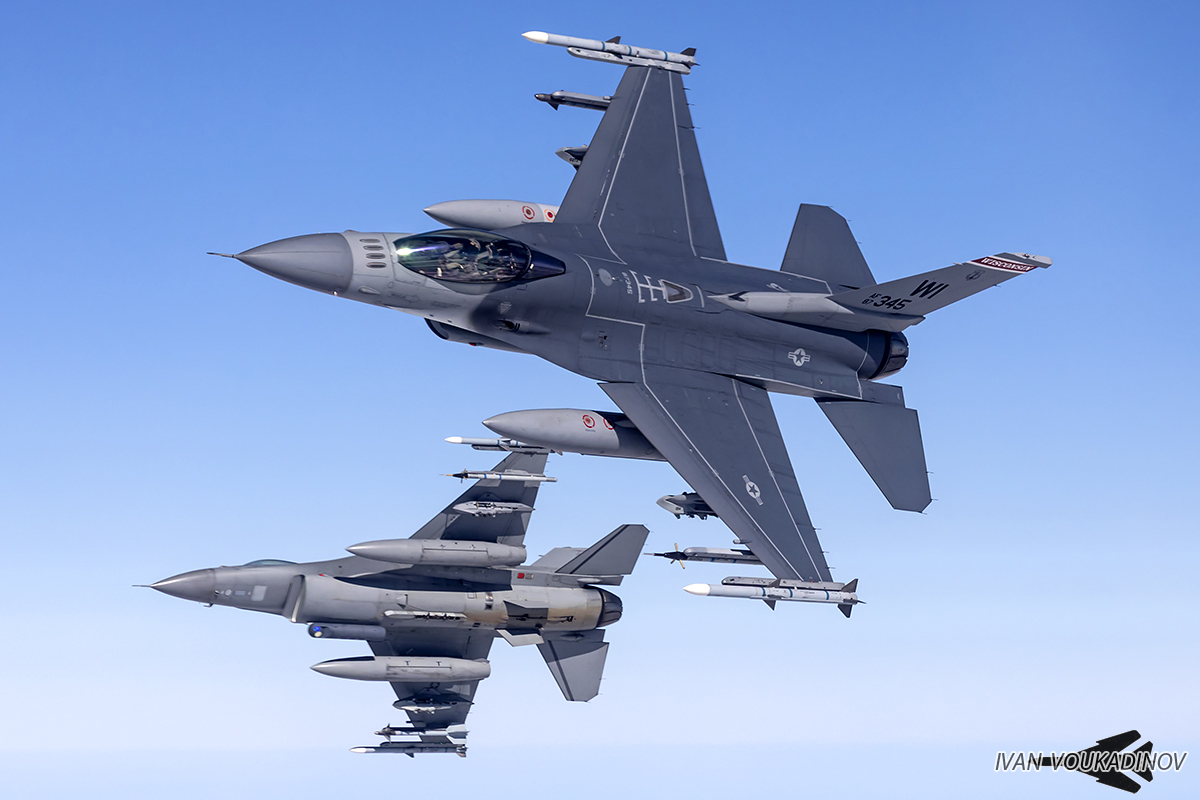





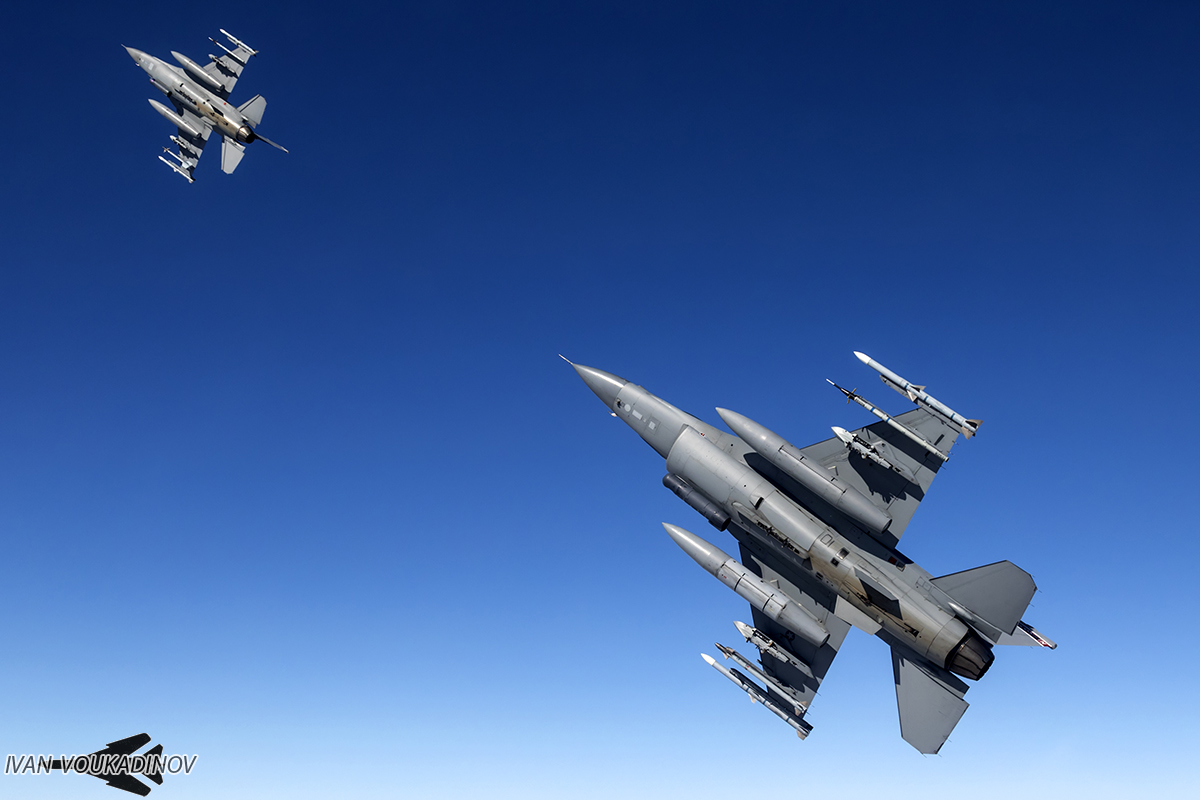


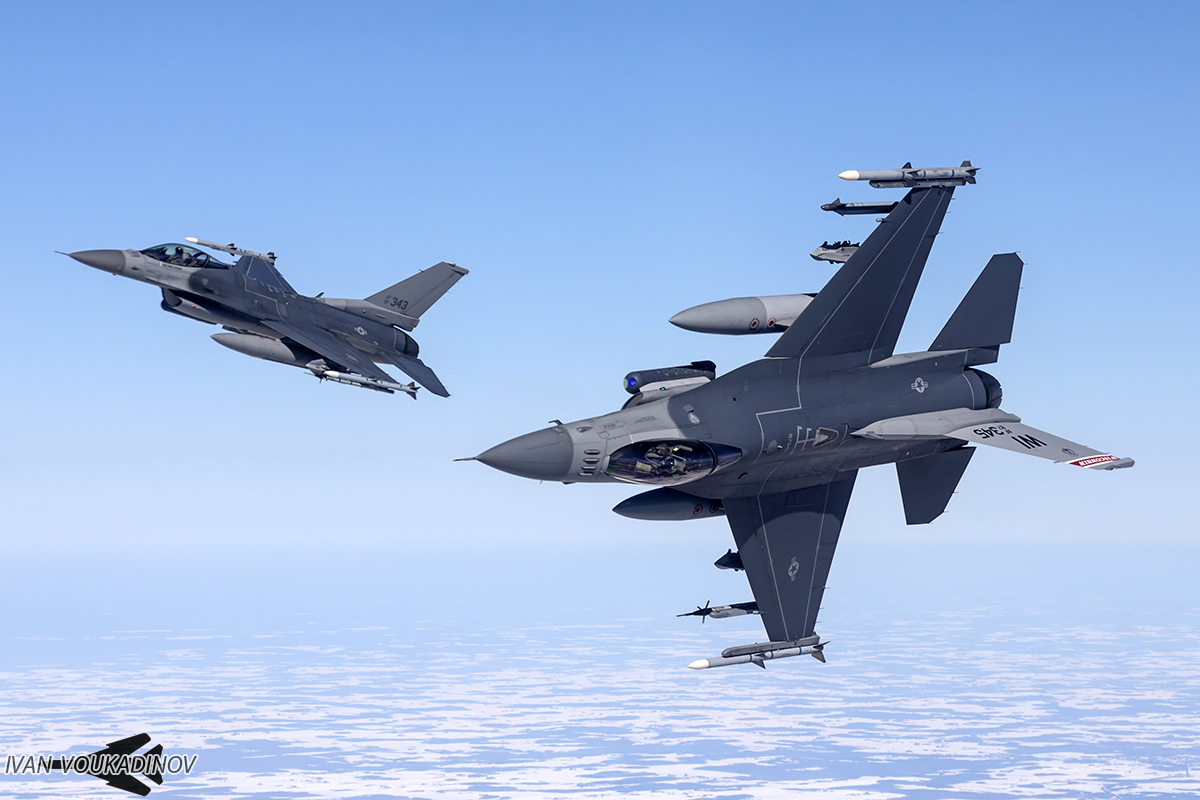
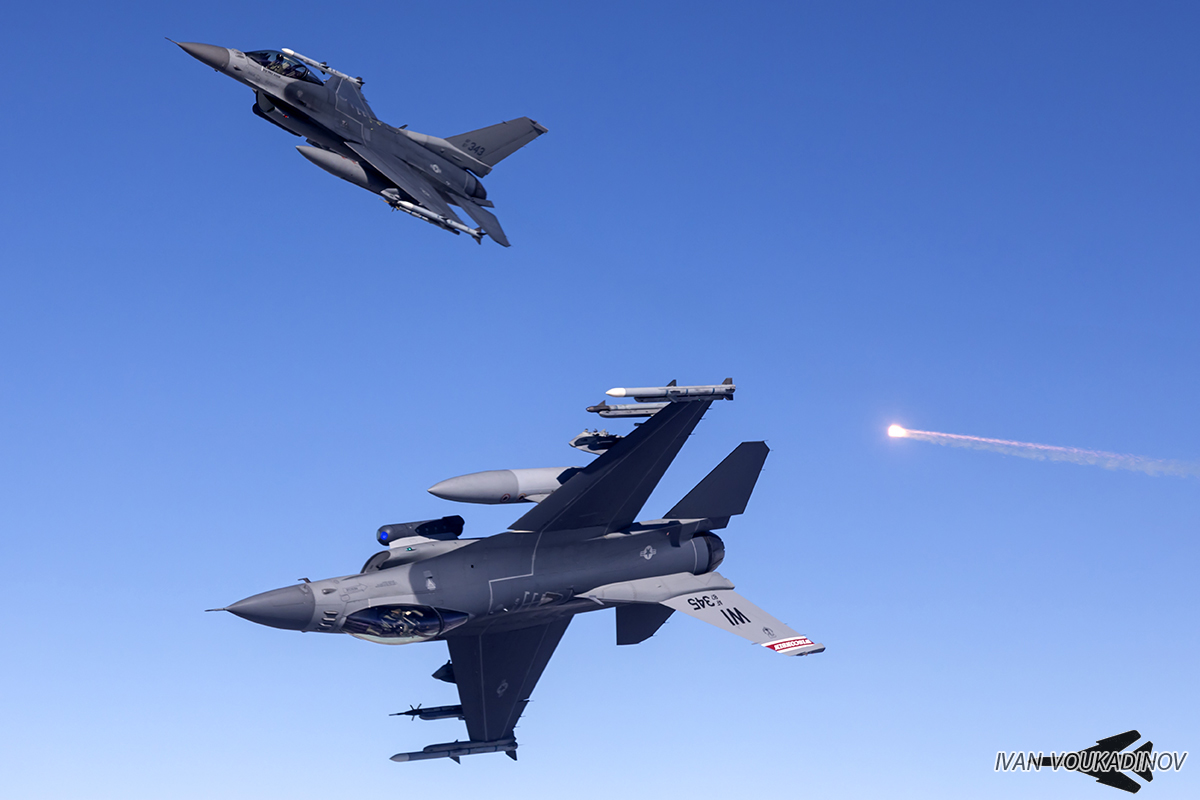

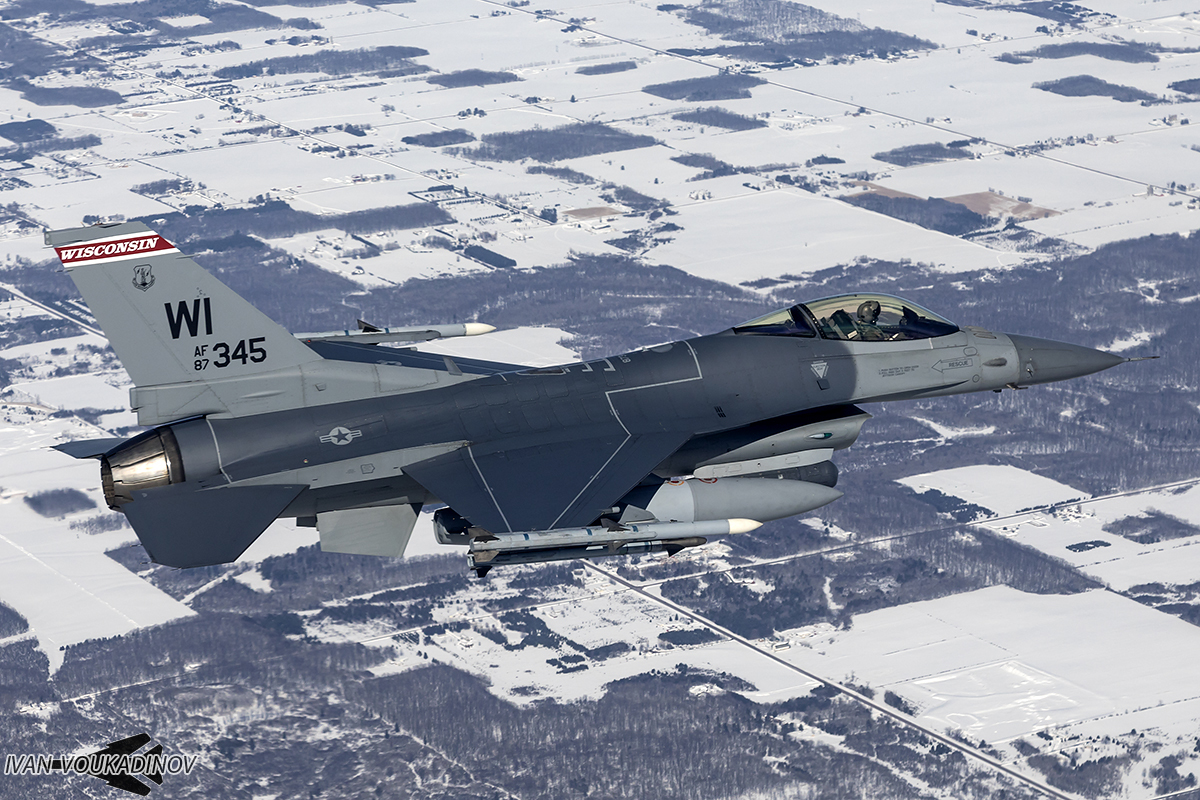
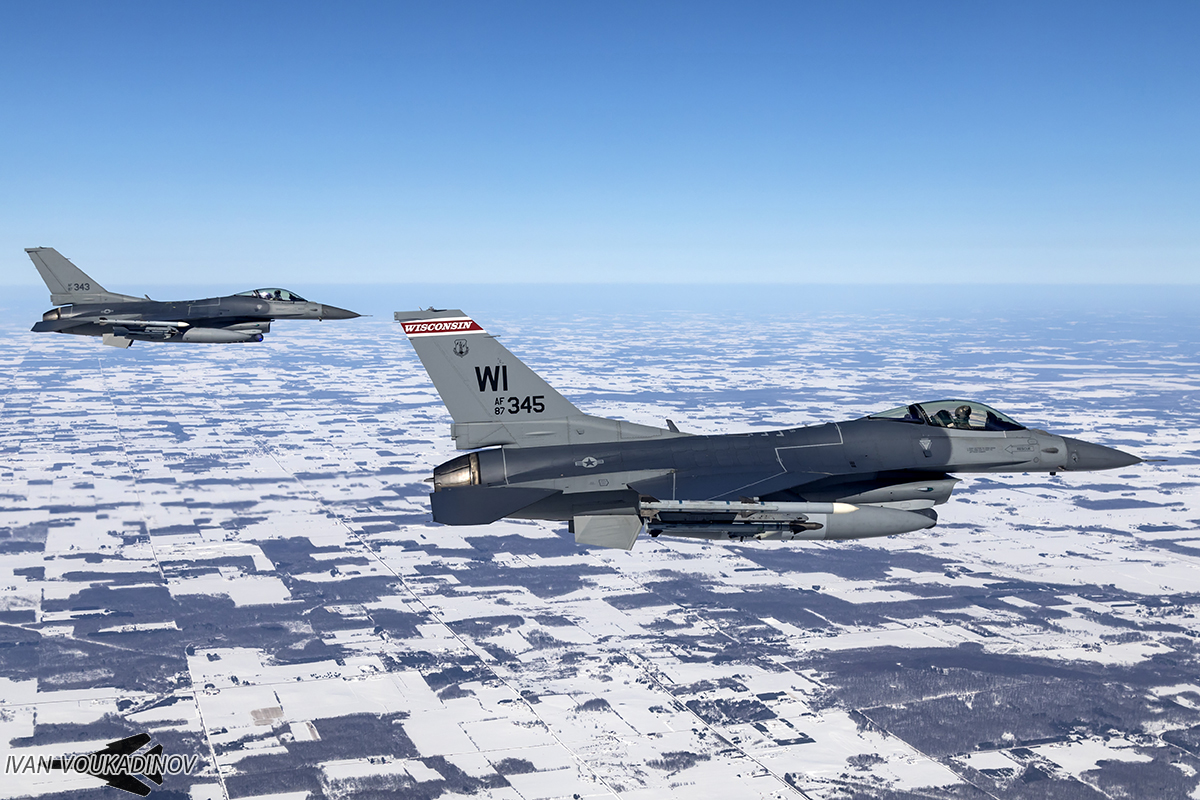
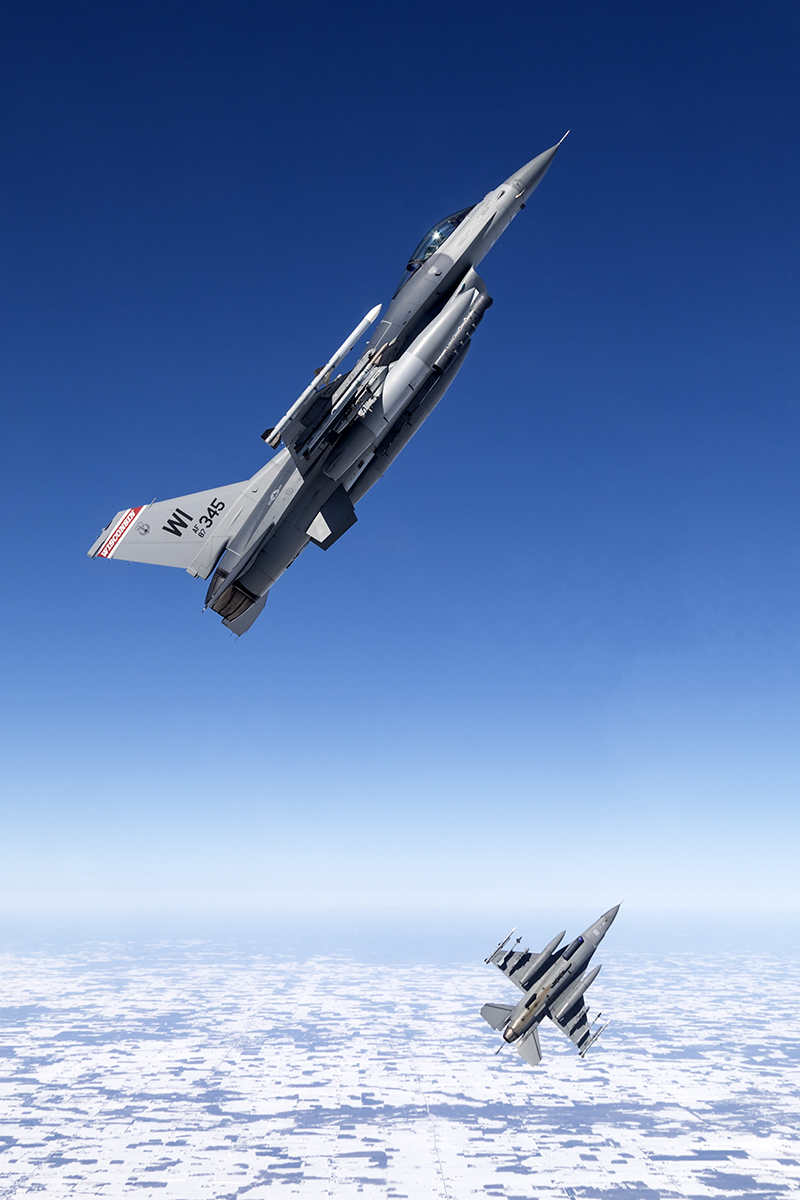
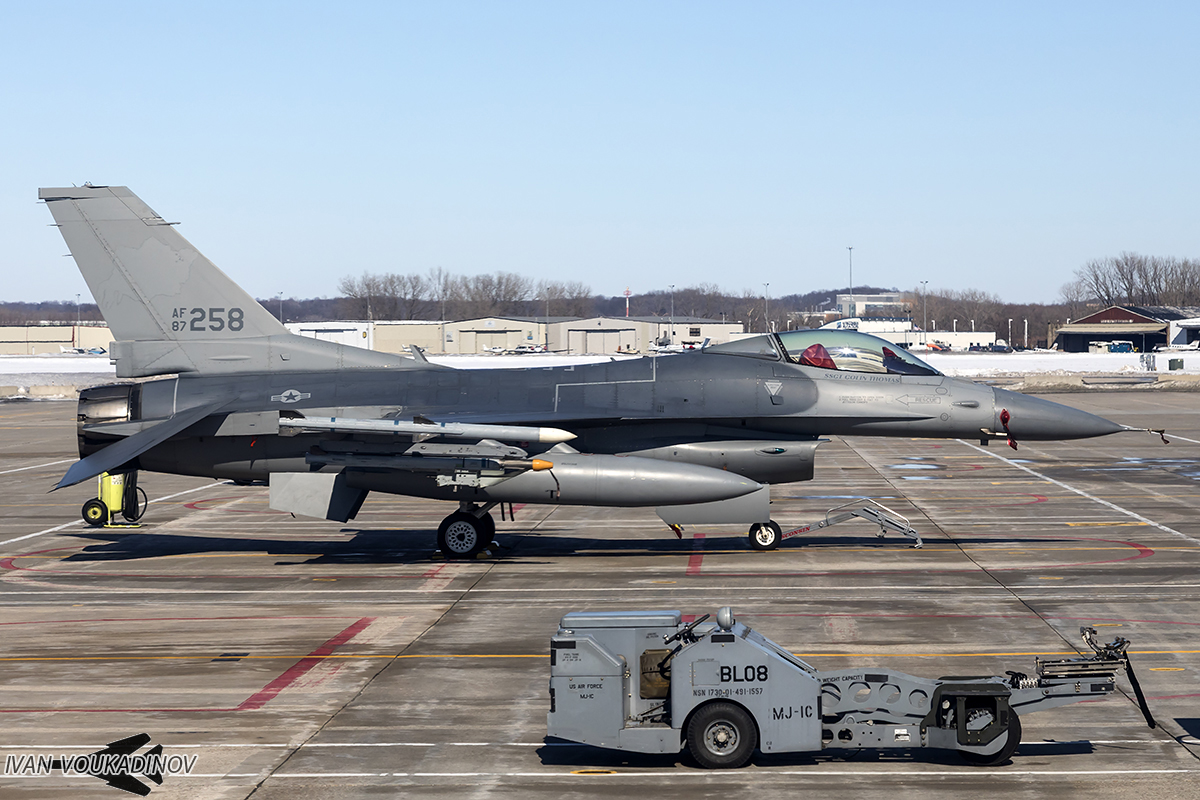
Ivan was born in Bulgaria and his interest in aviation began at an early age after multiple visits to a MiG-23 base and due to my home’s proximity to the civil airport. Later, he moved to Chicago where he has lived ever since. His main interest is military aviation although he also likes civil aviation and regularly visit Chicago O’hare airport to take some photos. Ivan has been publishing in various military aviation media outlets for the past 8 years and has frequently worked with the US military, having flown with all branches. He has also made numerous visits with other foreign air forces. For his photography, Ivan has always used Canon equipment.

